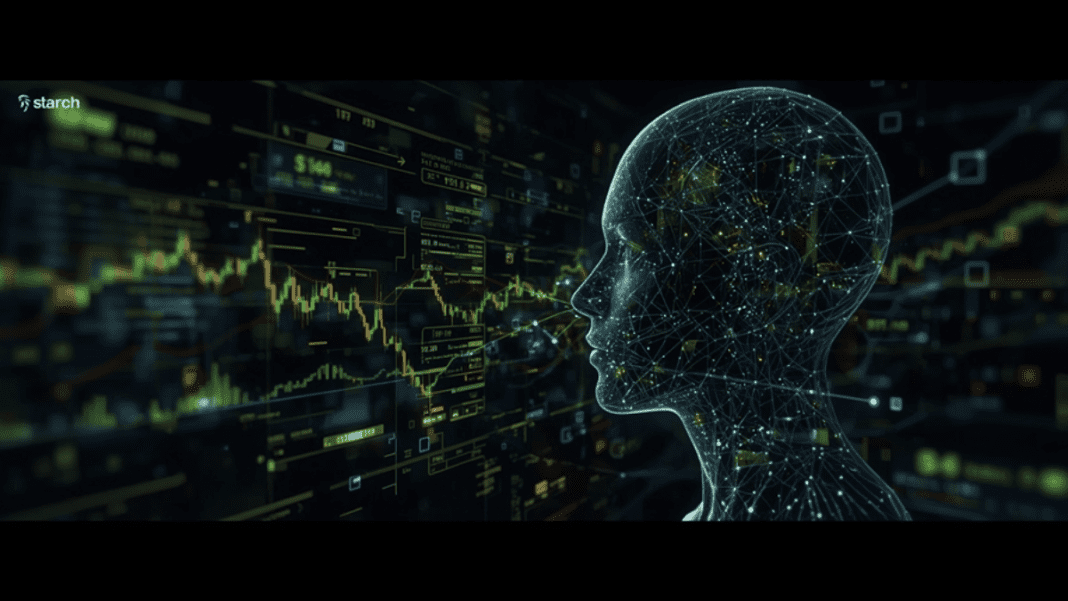The global trading landscape is evolving faster than ever. Markets today operate at machine speed, influenced by algorithmic order flow, instant liquidity shifts, and rapid-fire news cycles that move prices in milliseconds. For retail traders, this new environment introduces a dramatic challenge: traditional decision-making and risk management methods can no longer keep up with the pace or complexity of modern financial markets.
This shift is pushing a new wave of innovation into the trading industry-systems that use artificial intelligence not to predict the market, but to protect traders from unnecessary risk. Among the platforms leading this transformation is SmartT, an AI-enhanced copy trading and risk-management ecosystem designed for everyday investors who want safer, more structured trading.
Unlike predictive bots or basic copy trading tools, SmartT focuses on evaluating behavior, market conditions, and trade safety in real time. The platform does not guess where the market is going. Instead, it analyzes whether market conditions are stable enough to justify entering a trade at all. This risk-first philosophy marks a significant departure from the approaches used by most modern trading systems.
Why Traditional Trading Approaches Are Losing Effectiveness
For years, retail traders relied on technical indicators, chart patterns, and personal intuition. But today’s markets move too quickly and too erratically for manual analysis to remain reliable. Volatility can spike without warning. Liquidity can evaporate in seconds. Major news can reverse price direction instantly. And in this environment, emotional decision-making becomes even more dangerous.
The two most common reasons retail traders fail are:
- Emotional decision-making under pressure
When markets move quickly, traders often become reactive. Fear, greed, frustration, and hope all interfere with objective analysis. This leads to premature entries, oversized positions, and rushed exits-exactly the behaviors that cause accounts to break down. - Lack of real-time risk awareness
Traditional tools do not track live volatility conditions, liquidity behavior, correlation between assets, or spread instability. Traders often enter positions without realizing the market has shifted into a high-risk phase.
This gap between trader behavior and market conditions has created a need for systems that operate automatically, objectively, and consistently-even when humans cannot.
SmartT was built specifically to address these weaknesses.
Copy Trading Is Growing, But Not Always Safely
Copy trading has exploded in popularity because it allows beginners to follow experienced investors. The idea is simple: if someone consistently makes profitable decisions, others can benefit by mirroring their trades.
But the old model of copy trading has a serious flaw:
performance does not equal safety.
A trader can produce excellent results during stable conditions and still collapse under high volatility. Copying their trades exposes followers to the same emotional swings and unpredictable behaviors.
This is where SmartT differentiates itself from the industry standard. The platform introduces an AI-driven safety layer between the trader and the follower. The system evaluates each potential trade and blocks it if conditions fail strict risk criteria.
SmartT automated trading ecosystem
SmartT’s AI checks for:
- volatility acceleration
• spread widening
• instability caused by news
• trader inconsistency
• correlation with other active positions
• time-of-day market sensitivity
• liquidity fluctuations
Only when all layers align does SmartT execute the trade.
This transforms copy trading from a passive duplication tool into a structured, risk-managed system.
Why AI in Copy Trading Must Focus on Protection, Not Prediction
One of the biggest misconceptions in the trading community is that AI is used mainly for predicting the market. While this might sound appealing, machine prediction becomes highly unreliable during unexpected volatility or abnormal market conditions.
SmartT’s approach is fundamentally different.
The platform does not attempt to predict price movement.
Instead, it focuses on protecting users through:
- behavioral analysis of traders
• real-time volatility and liquidity monitoring
• market condition validation
• AI-driven risk filtering
• multi-layer decision supervision
This method is far more sustainable because risk-unlike price-is measurable, observable, and controllable.
In other words:
Prediction is fragile.
Risk control is durable.
SmartT’s entire architecture is built around this principle, creating a system designed to withstand unstable markets, unpredictable news cycles, and emotional decision-making.
The Importance of Real-Time Risk Validation
Most trading bots and indicators rely on historical data. They assume the future will behave like the past, which is rarely true in an algorithmic market. SmartT avoids this pitfall by adopting a real-time validation model.
Before any position is opened, SmartT examines:
• current volatility conditions
• active liquidity levels
• spread stability
• correlation between multiple instruments
• price acceleration
• recent market anomalies
• trader behavior patterns
If even one of these factors looks abnormal, SmartT blocks the trade automatically.
This is one of the main reasons SmartT has become a leading example of how AI can bring institutional-style risk management to everyday retail traders.
risk-controlled copy trading model
A New Standard for Responsible Copy Trading
The global financial environment is scheduled to become even more complex over the coming years. Markets are increasingly influenced by machine trading, automated liquidity engines, and real-time news feeds. In such an environment, safety must evolve as quickly as opportunity.
Platforms like SmartT demonstrate a structural shift in how retail investors can protect themselves. By placing risk first and filtering decisions before they occur, SmartT helps remove the emotional, reactive, and unpredictable aspects of trading-allowing users to participate in the market with more clarity and stability.
As financial markets continue to evolve, one point is becoming increasingly clear: the era of emotional, intuition-driven retail trading is fading. In its place, a new generation of risk-managed, AI-moderated trading frameworks is emerging-designed to support traders who want stability over speculation. SmartT stands as one of the strongest examples of this shift, offering retail investors an environment where risk is not left to chance, and where AI functions as a real-time guardian rather than a predictive oracle.
One of the most misunderstood elements of copy trading is the belief that following a successful trader ensures long-term profit. In reality, even the best traders experience emotional fluctuations, inconsistent behavior, or misjudgments during volatile market periods. Traditional copy trading platforms replicate these errors without question, exposing followers to unnecessary danger.
SmartT redesigns this model by introducing a protective AI layer that evaluates market conditions and trader stability before any trade is allowed to execute. This transforms the nature of copying from blind replication into a filtered, regulated, and risk-controlled process.
The Structural Weaknesses of Traditional Copy Trading
In most legacy platforms, copy trading works like this:
a trader opens a position, and the system copies that exact trade to the follower’s account.
This model has several critical flaws:
- Exposure is copied, too-not just direction
A trader might increase position size due to confidence or emotion. Followers receive the same exposure, even when it exceeds their own risk tolerance. - Timing mistakes are inherited
If a trader enters during a spread spike or liquidity drop, followers inherit the same bad timing. - Correlation risks compound silently
Followers may unknowingly copy multiple positions across correlated instruments, multiplying risk unintentionally. - Emotional trading is contagious
If the lead trader gets emotional, followers pay the price too.
SmartT solves these issues by stopping the system from acting as a “mirror” and instead turning it into a risk validator. It ensures that every copied trade goes through a series of safety checks before reaching the user’s account.
This shift-putting AI in the middle-fundamentally changes the safety profile of copy trading.
AI Moderation: The New Standard for Trading Safety
SmartT’s risk architecture relies on a set of real-time AI modules designed to analyze safety rather than predict price. These modules continuously monitor:
- volatility spikes
• sudden price acceleration
• liquidity drops
• abnormal spreads
• news-driven instability
• inconsistent trader behavior
• pair correlations
• execution conditions
• time-of-day risk zones
If conditions fall outside safe parameters, SmartT blocks the trade instantly.
This behavior is important because markets often fail at the exact moments traders least expect. A news headline, central-bank statement, or liquidity vacuum can destabilize prices faster than a trader can react.
SmartT’s logic removes the burden of constant monitoring, reducing the cognitive load on the user and preventing emotional or impulsive mistakes.
How SmartT Uses AI to Filter Trader Behavior
SmartT does not simply follow the top-performing traders. Performance alone is not a reliable metric because it doesn’t reveal how a trader behaves under pressure. Instead, SmartT analyzes factors that directly affect long-term safety, such as:
- drawdown stability
• volatility avoidance
• selectivity of entries
• emotional consistency
• discipline during market stress
• repetitive behavior patterns
• reaction quality during uncertainty
If a trader begins acting unpredictably-opening excessively large positions, chasing losses, or trading aggressively-SmartT identifies this behavior and filters out those trades automatically.
This is one of the most significant innovations SmartT brings to copy trading. Instead of penalizing users for trader mistakes, it protects them from them.
AI copy trading platform analysis
Daily Risk Limits: A Safety Net Retail Traders Cannot Live Without
One of the largest contributors to retail trader losses is revenge trading. A small loss leads to frustration, which leads to overexposure, and eventually to catastrophic account damage. Human emotion simply cannot be fully removed from manual trading.
SmartT’s daily risk-limit mechanism prevents this psychological chain reaction by enforcing strict daily limits on user drawdown. When a user reaches their loss threshold, SmartT locks all trading activity for the remainder of the day. No amount of frustration or emotional pressure can override this rule.
This solves one of the most dangerous patterns in retail trading:
Loss → Emotional decision → Bigger loss → Account destruction
AI does not make emotional mistakes.
It does not break rules.
It does not chase losses.
It enforces consistency.
This reset mechanism alone has saved countless traders from irreversible damage.
Correlation and Hidden Exposure: The Risk Most Traders Never Notice
Many retail traders believe they are opening a single trade when, in reality, they are unintentionally opening multiple correlated positions. For example, someone opening EUR/USD and GBP/USD may not realize that both pairs often move in the same direction due to shared sensitivity to U.S. economic data.
SmartT continuously checks correlation levels. If the system detects that a new trade increases correlated exposure beyond the user’s safety threshold, it will:
- reduce position size
• block the new trade
• or rebalance exposure across pairs
This protects users from hidden risks that normally go unnoticed.
Traditional copy trading platforms lack this level of analytical intelligence, which is why correlation accidents are among the most common causes of unexpected account blowouts.
Why AI-Driven Copy Trading Represents a New Era
Copy trading is evolving. The earliest generation of platforms offered simple trade replication with almost no risk control. The next generation added basic settings like stop-loss adjustments and fixed lot sizes. But today’s markets demand far more than that.
The new era of copy trading must be:
- AI-regulated
• risk-aware
• behavior-filtered
• volatility-adaptive
• correlation-balanced
• emotion-neutral
SmartT embodies this next generation.
By putting AI in the decision chain, it ensures that copying trades is not just easy-but safe.
Rather than chasing high-risk strategies or unpredictable traders, SmartT focuses on structured execution, real-time monitoring, and advanced risk filtration. The platform represents a shift from speculative following to disciplined, data-driven participation.
Conclusion: The Future of Copy Trading Is AI-Moderated and Risk-Driven
With markets becoming increasingly algorithmic and reactive, retail traders can no longer rely on outdated methods or emotional decision-making. AI-driven risk systems like SmartT are becoming a critical part of modern trading infrastructure-not because they predict the market, but because they protect traders from its unpredictability.
SmartT illustrates a broader shift happening across finance:
Risk management-not prediction-is the true foundation of long-term success.
Platforms that can adapt, filter, validate, and enforce safety at machine speed will set the standard for the future of retail trading. SmartT stands at the forefront of that transition, delivering a more stable, disciplined, and intelligent copy trading environment for users around the world.
By Saeed Hooshmand – a fintech entrepreneur and founder of SmartT, focused on developing AI-driven trading and risk-management technologies for modern retail investors.





